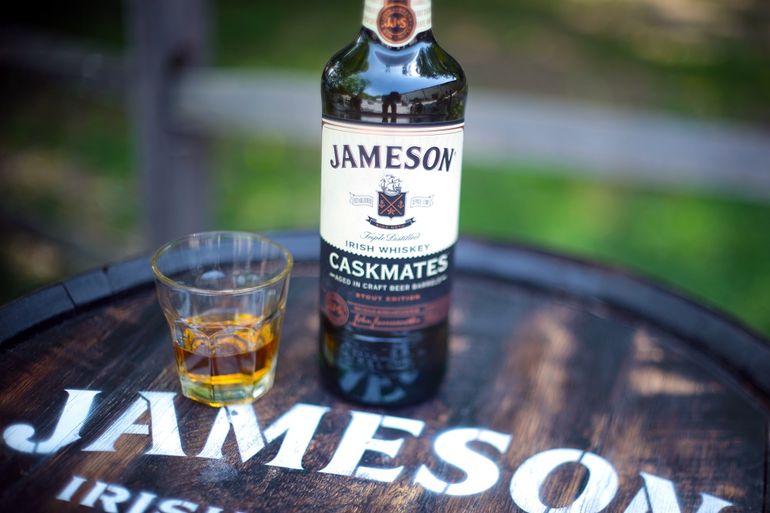Start 14-Day Trial Subscription
*No credit card required

Pairing Whiskey with Beer
So what about other whiskeys? I went to my liquor cabinet and brought out a bottle of Defiant, a single malt, which figured to be good for another round of pairings.
Alas, a similar result with the Gonzo Imperial Porter.
While it might be fun to report gonzo journalism lives and that I dove right into more whiskey and beer despite the bats flying through my house that had jumped off Steadman’s label amidst other paranoid ramblings, I concluded the inaugural whiskey and beer evening in favor of a second day’s sampling and a fresh palate.
 Defiant, distilled in North Carolina by Blue Ridge Distillery, comes out of the same mountains that have been dominated for several centuries by Scotch-Irish distillers otherwise known as bootleggers. By creating a different way to distill it, this whiskey is made in the same spirit moonshiners often displayed. Defiant is made, surprisingly, without barrels. The influence of American oak comes from spirals of the wood used during the aging process in modern stainless steel tanks. It has been judged to be one of the most bourbon-like single malts made in the U.S.
Defiant, distilled in North Carolina by Blue Ridge Distillery, comes out of the same mountains that have been dominated for several centuries by Scotch-Irish distillers otherwise known as bootleggers. By creating a different way to distill it, this whiskey is made in the same spirit moonshiners often displayed. Defiant is made, surprisingly, without barrels. The influence of American oak comes from spirals of the wood used during the aging process in modern stainless steel tanks. It has been judged to be one of the most bourbon-like single malts made in the U.S.
The Day 2 tasting began with a trip to a neighborhood store, which yielded a bottle of Innis & Gunn Original as well as Lagunitas IPA.
A stab at making a complementary choice for the Defiant, the Innis & Gunn Original was one of the primogenitors of the movement to match beer with bourbon barrels. When paired with Defiant, the intense, flavorful whiskey highlighted the beer’s sweet vanilla notes, but otherwise, the beer and whiskey didn’t quite connect.
About this time, there seemed to be a pattern developing. I realized what was happening with each of the whiskeys and all of the pairings. Pairing the two alcohol types emphasizes retronasal tasting due to the volatized nature of whiskey, whose aromas are easily exhaled from the throat after a sip. A lesser known fact of life, retronasal tasting is something I first came across in Jeff Alworth’s recently released book The Beer Bible.
Alworth’s research is exacting and impeccable. In the case of explaining retronasal taste, he combined standard research on the nature of taste, which includes the limitations of the tongue, as well as insights from brewers who are charged with tasting beer daily and maintaining consistency. What Alworth confirmed was that the tasting of any flavor occurs most noticeably when the aromas come through the nose via the opening at the back of the throat, hence the phrase retronasal.
These retronasal “scents are always detected in the presence of the tongue’s taste,” writes Alworth. “That fusion may be why we are so easily fooled to think ‘flavor’ is something our taste buds sense. Yet, in most cases, when we say ‘taste,’ we mean the overall flavor of something, and when we say ‘flavor,’ we largely mean retronasal smell.”



